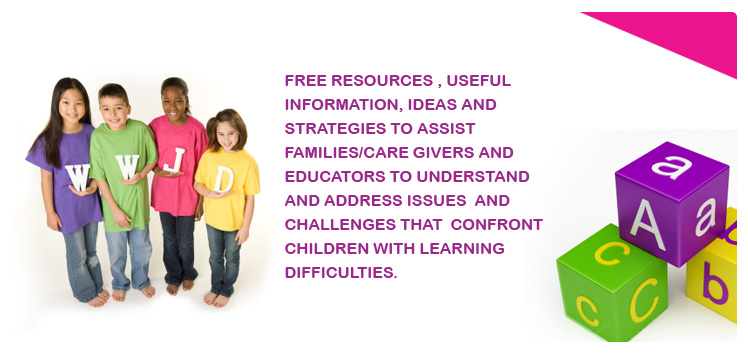

Handwriting
The skill of handwriting takes time and repetition to master and can be a very gradual process of understanding for some children. The realisation that written symbols have sounds and put together these make words, does not always come automatically and the sound>symbol association often needs to be developed.
Handwriting and the formation of letters can be very challenging for some children for a multitude of reasons. (Refer to the Specific Learning Difficulties). It is in itself a multi-tasking activity that requires far more brain activity than reading for example.

Reading – eyes > brain > processing and understanding
Writing – brain > processing > what to write > how to form symbol > physical ability to write it > pen grip > posture > placement of paper.
According to my research, the Cursive font, in its print form, is one of the best styles for children who have learning difficulties. It requires 5 basic movements that combine to form letters. Fortunately, in Australia our children are taught the cursive font in each State although they differ slightly in the basic shape with some being more oval than round.
I have found that many children with problems in this area, find capital letters far easier than lower case letters. Perhaps this is due to the fact that capitals are easier to remember…..they are written in stages and the pen is removed from the page during the process. This could also be why many children use capitals such as B D K H or N anywhere in words as these are far easier to remember and write than their lower case counterparts.
For this reason and also the fact that we use far more lower case letters than capitals during the writing process, I have found that it is more beneficial to concentrate on the latter letter formation.
Handwriting can be a very controversial issue, especially with regards to children who have problems forming the letters according to the accepted “norm” and prefer to start at the bottom and move upwards or start the round movements in the opposite direction. Different schools and educationalists have their own opinions on what is acceptable.
Personally, I feel that we spend far too much time being pedantic about the way a letter is written………if it looks like a legible e, why are we so worried that it has been written from the bottom up? The only reason letters need to be made using specific directions is to join them later on. Expecting children who find printed handwriting challenging enough and then have to join them later on, seems to me to be just another obstacle they do not need. I liken it to forcing a left-handed person to use their right hand!
A very interesting activity I did in a “More Than Mainstream” series of workshops is detailed below. It really highlights the enormous amount of energy needed by children, whose natural inclination is to reverse their movements, to form letters “correctly”.
A3 piece of paper with bold, black lines and shapes drawn on it. Cover it with a piece of tracing paper. Place a mirror at the top and whilst looking in the mirror only, (do not cheat and look at the paper) attempt to trace the patterns!!! Just imagine how hard it must be for some children trying to do this day after day with activities the rest of us just take for granted.
I encourage children first learning to form their letters using the correct direction and flow of movement but do not dwell on the letters that continuously form the wrong way round. As long as the letters look like they should and the writing is neat, easy to read and it does not hinder the speed at which they write, then I believe the goal has been reached.
PENCIL GRIP
This is a very important aspect of handwriting. Poor pencil grips mean poor and often laborious writing. It can also lead to problems such as arthritis later in life. Extensive research has determined that the dynamic tripod grip is the most beneficial way to grip, with the pencil held between the thumb and forefinger and resting on the middle finger. Refer to the “formation of letters” on the website for more specific information.
I think of handwriting as being a form of self-expression; almost an artwork reflecting us as individuals. It indicates our moods……….all over the place when we are angry or in a hurry (my shopping lists are gibberish to anyone else!) ……or slow and laborious when we are feeling down or lazy.
In the junior years of Primary School, about Grade 2 or 3, our class had a lesson on handwriting and how our individual styles can reflect our personalities.
Bold and straight – confident
Slanting forwards – extrovert
Slanting backwards – shy
There were also meanings for pointed, rounded, spidery writing.
We had so much fun analysing our handwriting and coming up with our own unique styles. One of my friends decided to put a bubble over her i instead of a dot……..she still does so to this day and it is a good reflection of her bubbly personality. The only stipulation using our personal handwriting styles was that we kept up in the dictation lessons!
To me, the most important aspect of handwriting is that it is legible and neat so that others can read it. As I tell my students, what is the point of writing a great story when it is so untidy that no-one else can enjoy it!
© Playground Sound
This website has been made possible thanks to Layne Beachley’s “Aim for the Stars” Foundation.